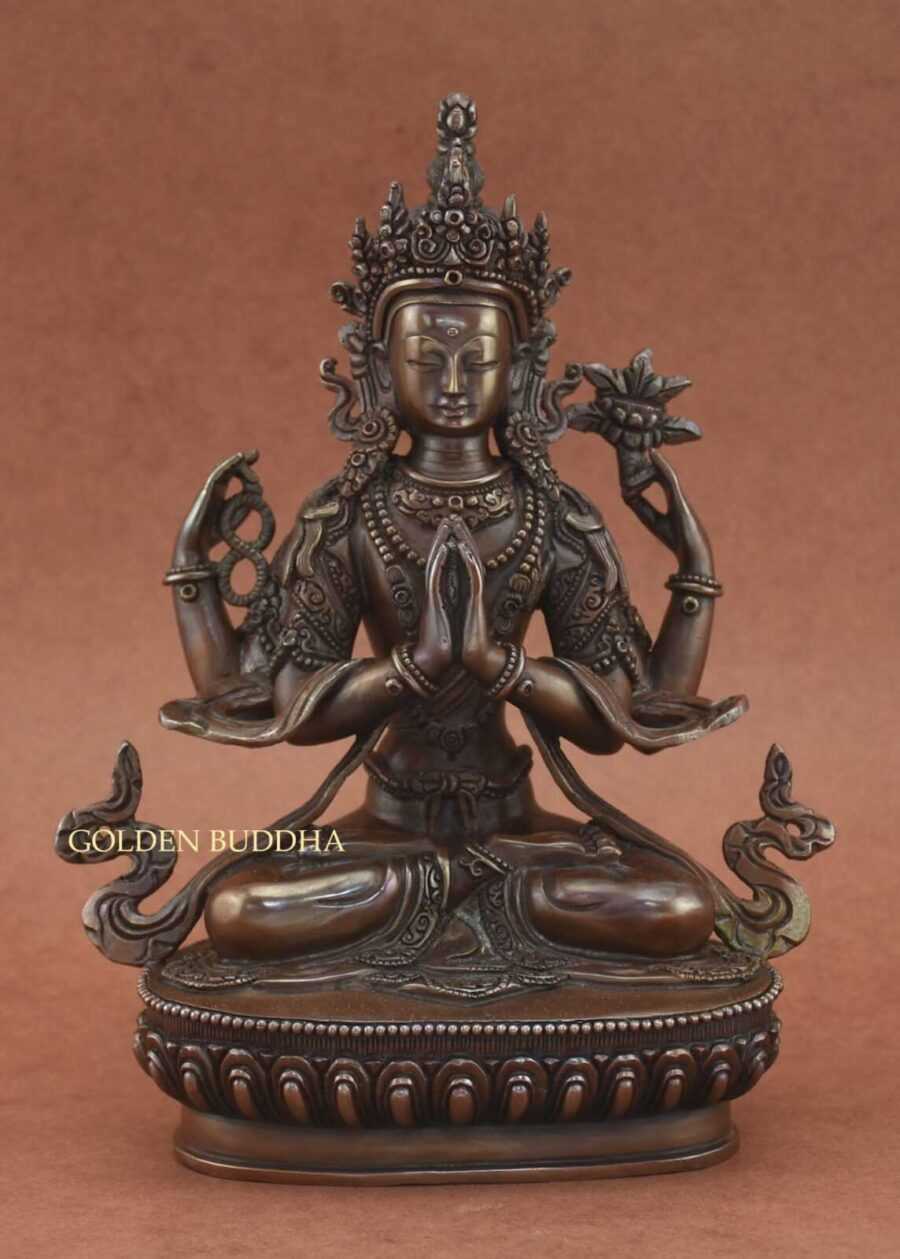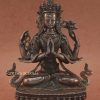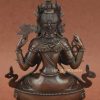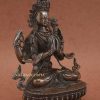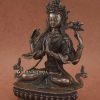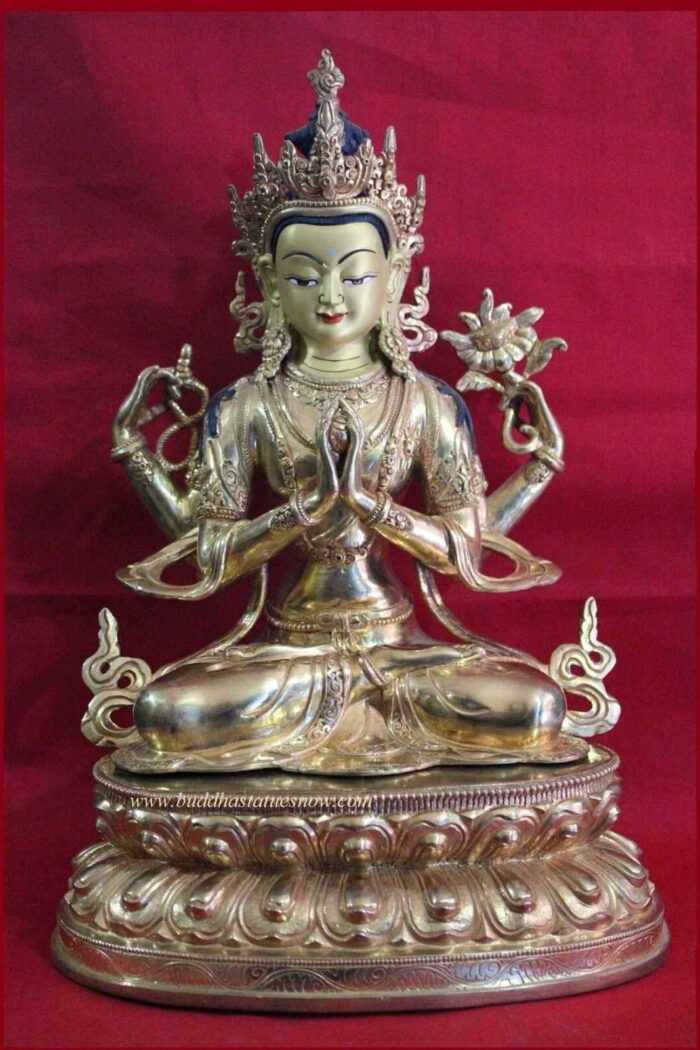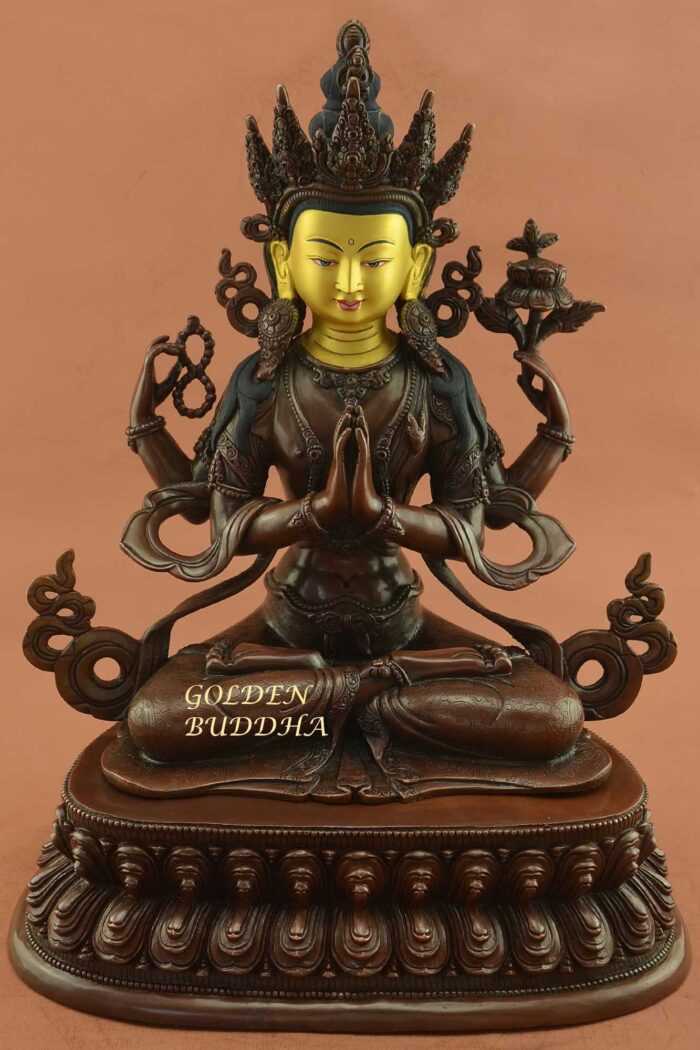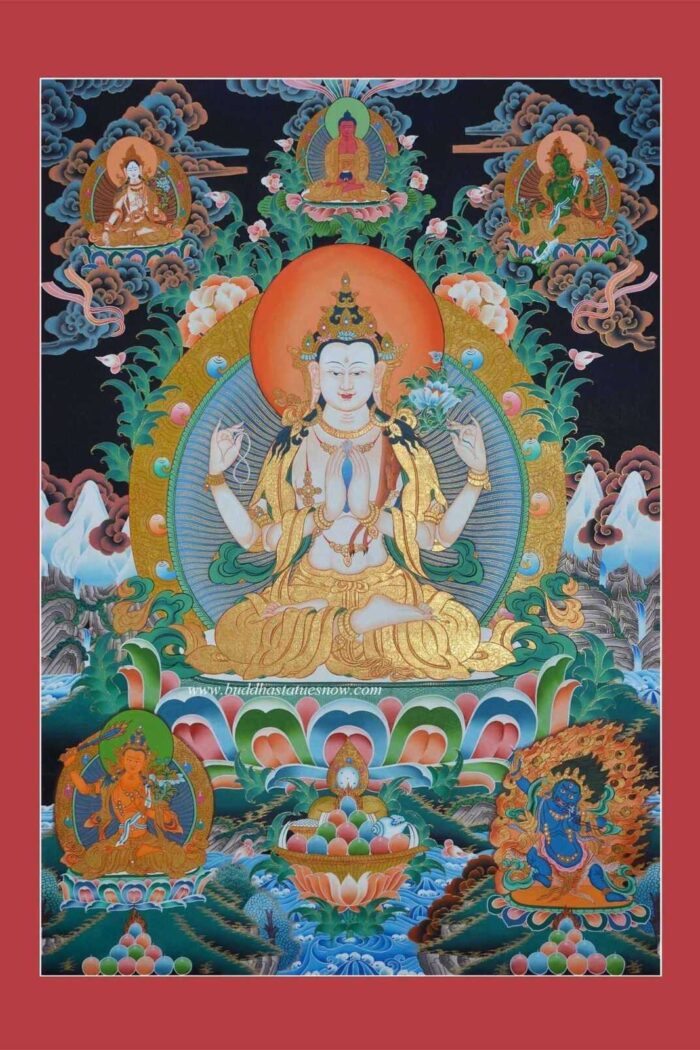The Nepali artisan created our 9″ Chenrezig Statue with the crown and jewels of a bodhisattva. At the request of the buyer we can embed turquoise and red coral stones into the crown and jewels. It is a complimentary service completed at no extra cost to the buyer. As a result, your Chenrezig statue will display the important colors of Tibetan Buddhism and inspire all who see it. Please be sure to notify us before shipping if you wish to have the stones inserted.
This statue was handmade using the traditional lost wax method. The lost wax method has been used for many centuries to create the best statues in the world. As a result, our handmade statues and ritual items are the preferred source of the Tibetan monasteries.
Special Meaning of This Chenrezig Statue
After Buddhism was initially founded it became one of the world’s most highly venerated religions. However, as Buddhist beliefs spread to East Asia certain adaptations were made to suit different cultures. This caused the identity of Avalokiteshvara to be modified when Buddhism arrived in Tibet. The result was the bodhisattva became known as Chenrezig.
In addition, the new appearance of Avalokiteshvara featured four arms, each holding a special symbol and a lotus flower grows over his left shoulder. Indeed, Chenrezig is known as “Padmapani” which means “lotus holder”. Our Chenrezig statue is also holding the mala beads in his upper right hand. This is because he is constantly reciting mantras to relieve the suffering of sentient life.
Furthermore, Chenrezig is pressing the “cintamani jewel” between two of his hands in front of his chest. This special jewel is believed by Tibetan Buddhists to grant wishes. Therefore, this is a special symbol and it is highly auspicious to have a Chenrezig statue depicted with the cintamani jewel. Click here to learn more about Avalokiteshvara.


